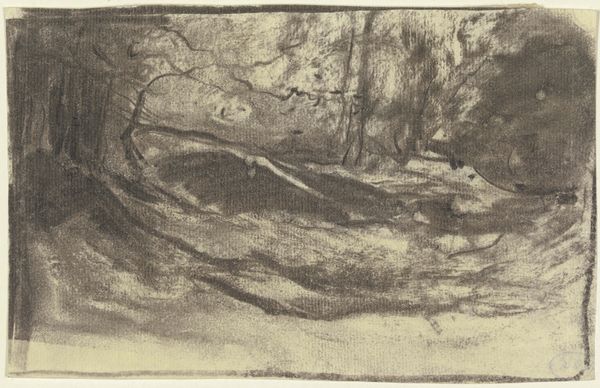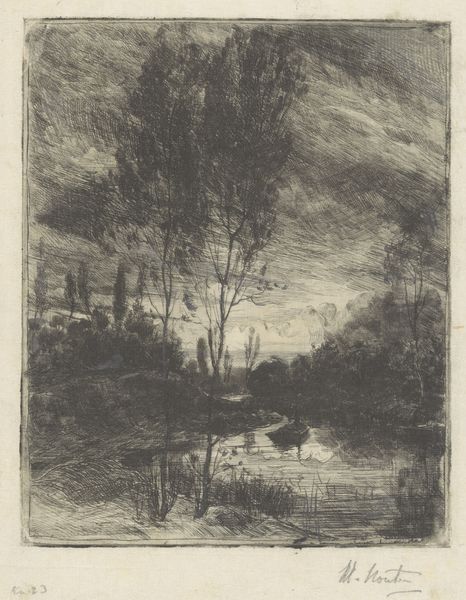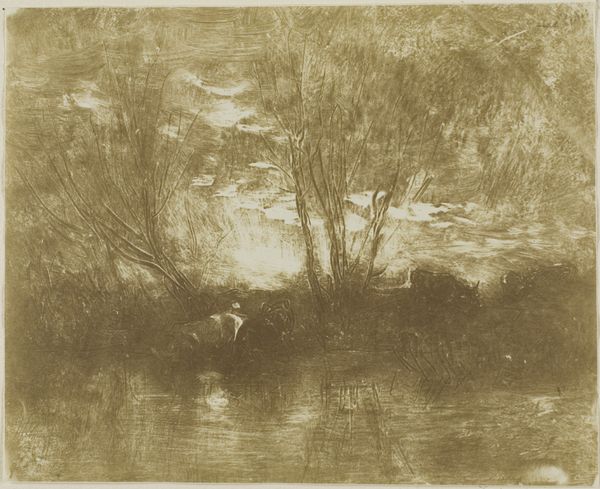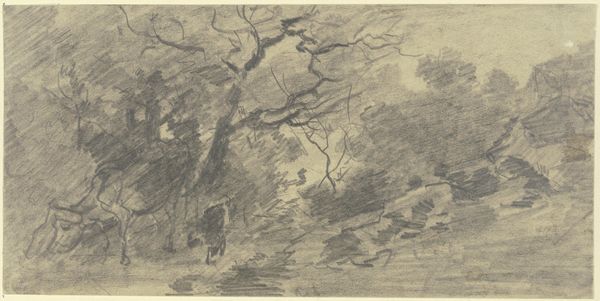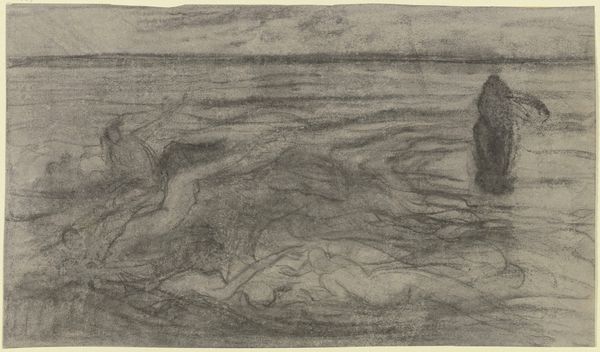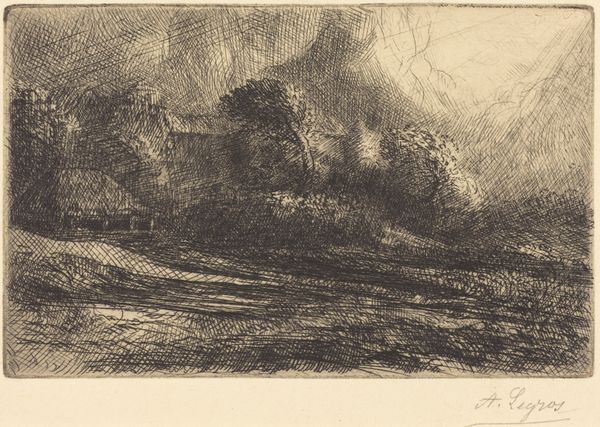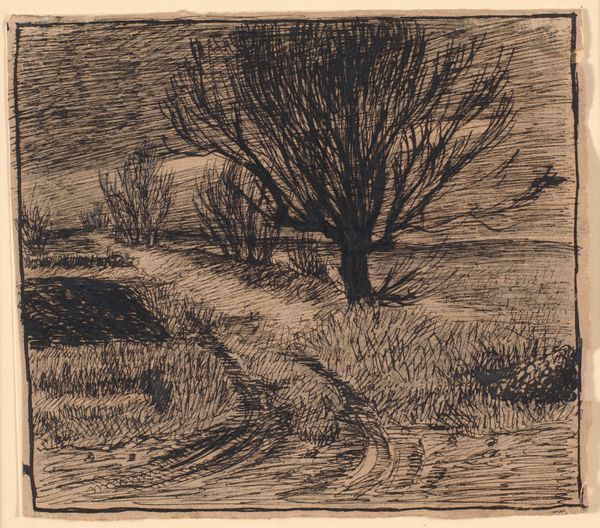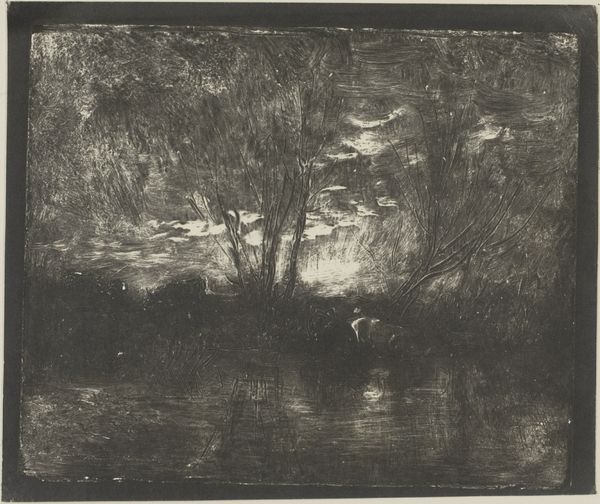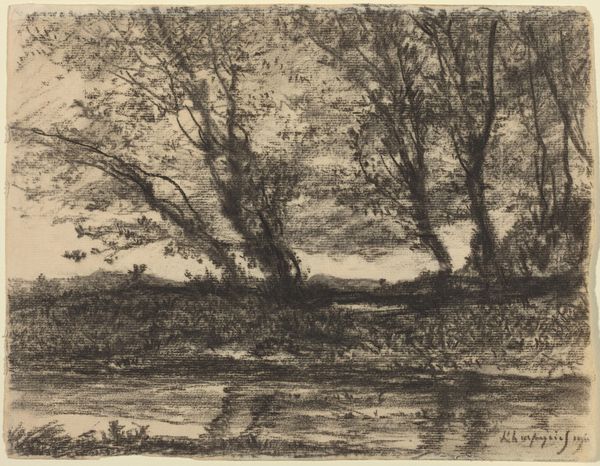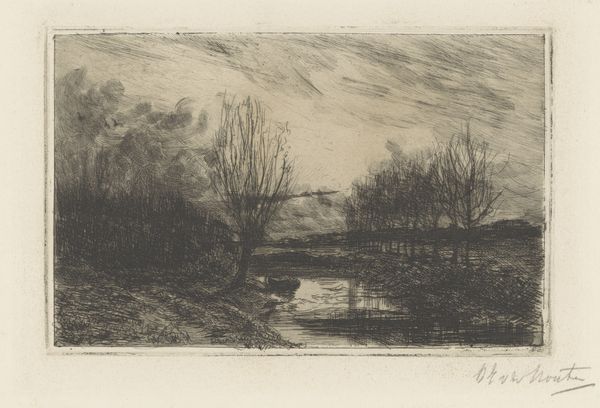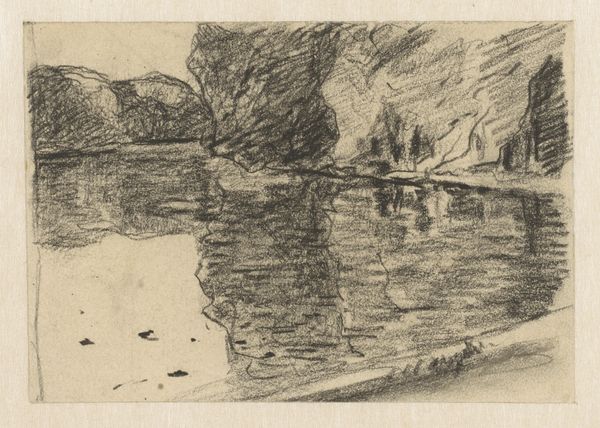
Woman Floating in a River Attended by Several Female Spirits c. 1895
0:00
0:00
drawing, charcoal, frottage
#
drawing
#
landscape
#
charcoal drawing
#
figuration
#
pencil drawing
#
symbolism
#
charcoal
#
frottage
Dimensions: overall: 48.1 x 62.6 cm (18 15/16 x 24 5/8 in.)
Copyright: National Gallery of Art: CC0 1.0
Editor: This is Frederick Trapp Friis's charcoal drawing, "Woman Floating in a River Attended by Several Female Spirits," circa 1895. The scene has an ethereal, almost dreamlike quality. What's your interpretation of it? Curator: It’s fascinating how Friis combines figuration with landscape in this piece. I immediately see the intersection of mythology and the societal constraints placed upon women. Given the period, the Symbolist movement was really grappling with representing female subjectivity beyond traditional roles. Could the spirits attending her represent facets of her own identity, either embraced or suppressed by societal norms? Editor: That's an interesting point. I hadn’t considered the symbolic representation of female identity. The river feels almost like a liminal space. Curator: Precisely! This liminality resonates deeply. Think about how water often symbolizes cleansing, rebirth, or the subconscious. The woman's floating could be interpreted as a release from earthly burdens, or perhaps a transition from one state of being to another. In the late 19th century, the rising tide of feminism also questioned fixed notions about womanhood. What role could it have played in this portrayal? Editor: I suppose this could be a commentary on the constraints women experienced during the late 19th century and their yearning for freedom. Curator: Absolutely. Moreover, the female spirits could be read as representing a sense of solidarity. Remember, the suffrage movement was gaining momentum during this time. Do you see a sense of empowerment emerging from the depicted camaraderie, or perhaps a melancholic surrender? Editor: I lean towards empowerment, there's a sense of quiet strength in their presence together. I initially perceived it as just a pretty image, but now I recognize it as having more socio-historical context. Curator: Exactly, engaging with these contextual layers allows the art to converse with the struggles and triumphs of women across different epochs, inviting us to confront the legacies of the past, and question the status quo today. Thanks for lending me your insights as well.
Comments
No comments
Be the first to comment and join the conversation on the ultimate creative platform.
